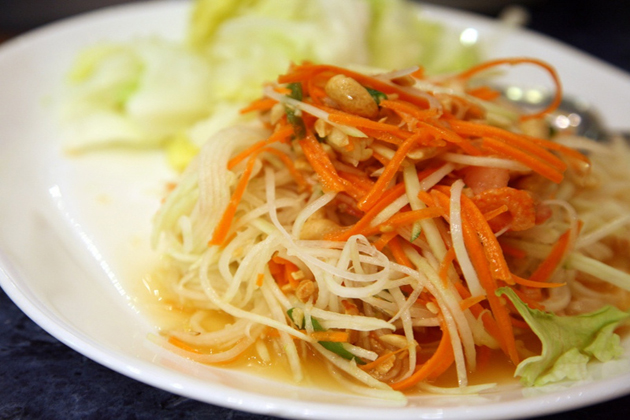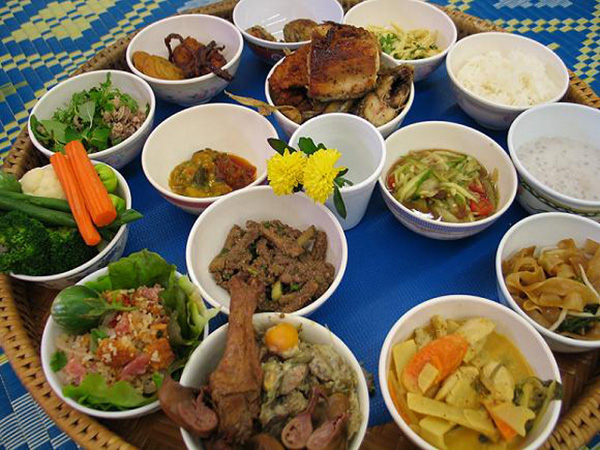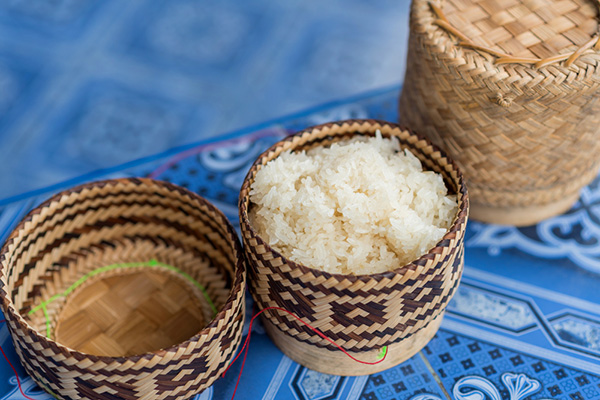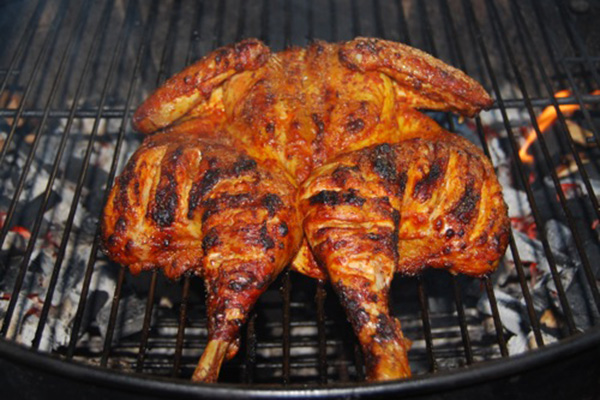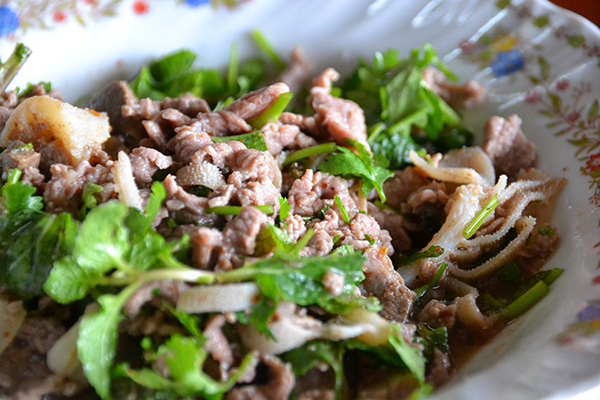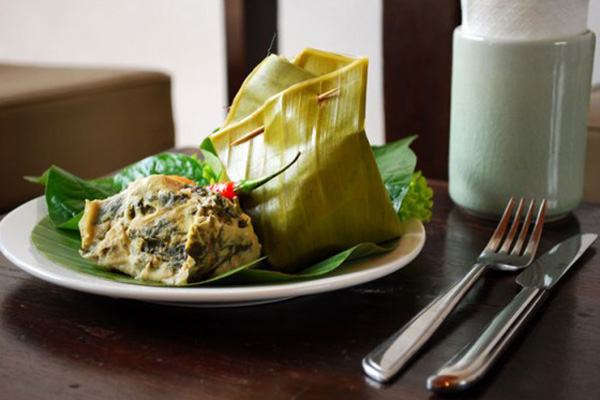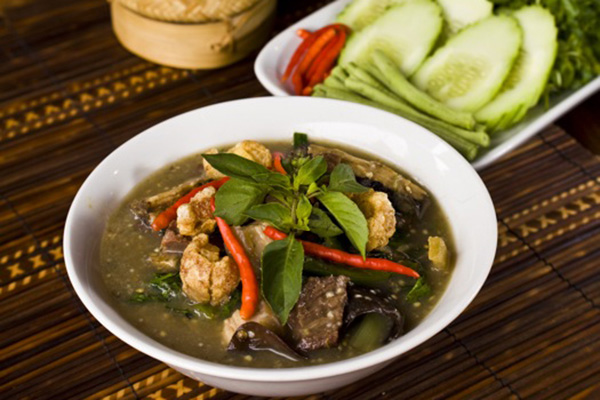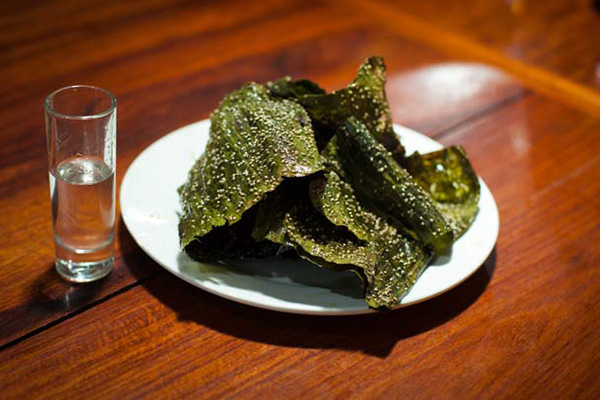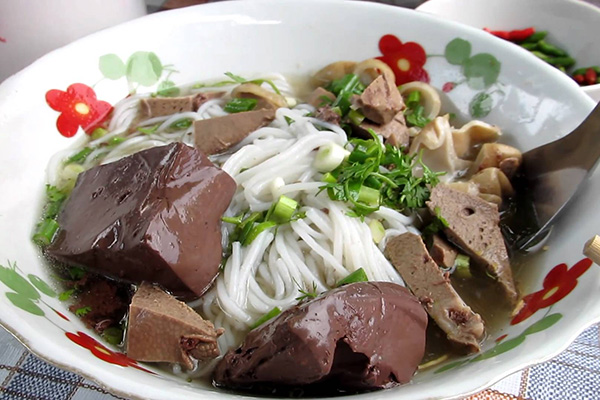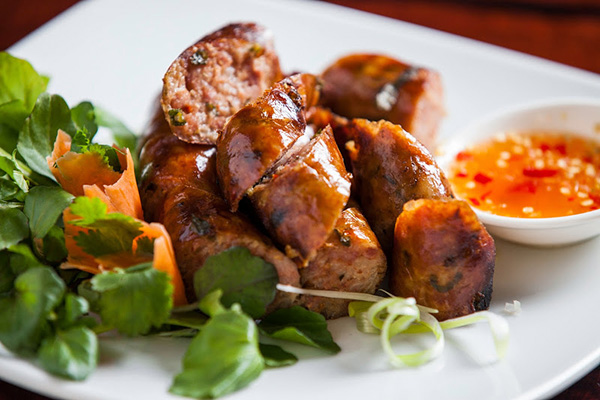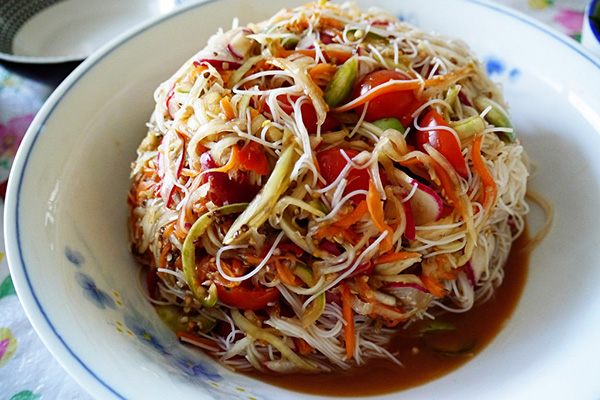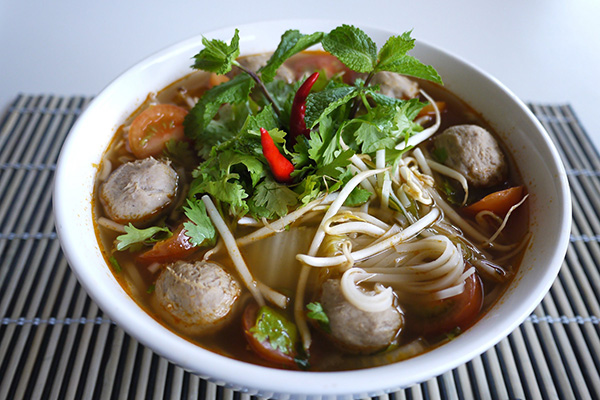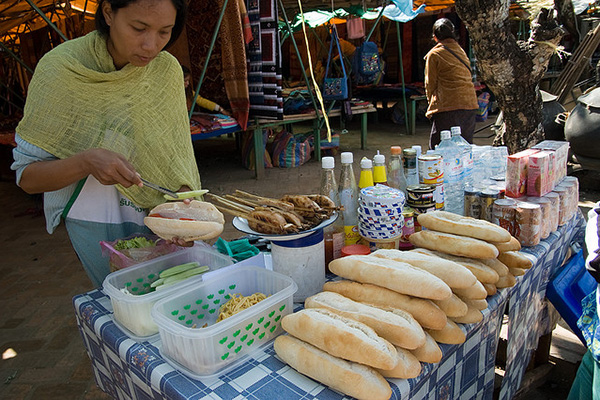The cuisine is always a hot topic for any food-lover. Food is the exact determination of the culture of a country and best represent its characteristic. Once you have arrived in Laos, you will not only be amazed by Laos’ beauty but also can’t resist from Laotian cuisine with many kinds of dishes and forms. Let’s get started for our food journey!
General Features in Laotian Cuisine
Laos’ culinary has shared some common features with its neighbors: Vietnam, Thailand, and Cambodia with a spicy, sour, and sweet flavor. Despite that, Laos also has some distinctive features. Rice is an everyday life food for Laotian, they eat it every day with many modifications in each region or province. Seasonings are a must whenever comes to Laotian food: ginger, lemon-grass, herbal and fermented sauce, which your sense can’t resist its taste. Moreover, every dish often contains chili in a different form: stir-fry, pickle, steaming, stew, etc.
Traditional Dishes of Laotian Cuisine
Klao Niaw (Sticky Rice)
As I mention above, Laotian eat lots of rice every day. There are 2 kinds of rice normally used in Asia: white rice (klao chao) and sticky rice (klao niaw). But for Laos, an agricultural country, Laotian prefers sticky rice to white rice because they consider sticky rice generating more energy for work than normal white rice. Therefore, “Klao Niaw” is one of their favorite.
Normally, during the meal, sticky rice will be put in a small basket and they will roll it into a small ball to eat. Sticky rice is usually served with grill chicken, boiled vegetables, and “Cheo boong”, one kind of fermented fish sauce. This is the most typical dish and you can find it everywhere in Laos.
Savannakhet's Grilled Chicken
The grilled chicken often served with Klao Niaw is originated from Savannakhet. But don’t worry, there is no need to go to Savannakhet to enjoy this dish. Nowadays, its popularity has risen, so you can find it in Luang Prabang, Vientiane, and other provinces.
The secret to making it delicious is the chicken meat. They do not use chicken which is raised in mass production but chicken left unbridled in the countryside. Therefore, its meat is firm and not dry when grilling. The sauce “Cheo boong” also helps increase the flavor of the dish.
Laap
When there are guests or visitors coming to one’s home. The owner will usually make “laap” to show his/her warmest welcome, and also means he/she wishes all the best and good luck for them.
Laap actually is a very simple dish, salad mixture of beef or pork or chicken, duck, mushroom with some seasonings such as lime juice, fish sauce, padeak, and some kinds of local vegetables. The meat inside the dish can be cooked or raw meat. It will be served at room temperature with “Klao Niaw”. With each region, there will be a different version of the dish (only duck or only beef is the main component).
Mok Pa - Steamed Fish
Although Laos is a country with no coastal line, “Mok Pa” – Steamed Fish is still a popular dish and Laos. The ingredient will be wrapped by banana leaves and be tied by bamboo strings. The fish is mixed with lemongrass, kaffir leaves, green onions, “padeak” (Laotian fish sauce), chili, etc. Steamed Fish should be eaten when it still warm and together with sticky rice.
Stew - Oh Lam
This stew is one of the special dishes in Laos and is often cooked on a special occasion. The dish originates from the ethnic group Hmong in Laos and mainly made from vegetables. This dish took a long time to prepare in advance, therefore; it is preferred by the elder and not popular with the young generation. It is recommended to be served with Tieo Bong and Papaya Salad.
The main ingredient is beans, eggplants, gourds, black mushrooms with some seasonings, but the secret makes it special is “sa kan”, bitter root herbs.
Kai phaen
If the Japanese have nori – seaweed which is nutritious, Laotian has Kai Phaen. This dish comes from the freshwater green algae (kai) in Northern Luang Prabang. In the dry season, when the river level is lower, locals will gather the green algae in the bottom of the river and dry it under the sun. After one day of drying, the algae will be mixed with other vegetables such as galangal, green onion, garlic, or tomato under the press of sheet shape and finally, top with some sesame.
Phaen can be eaten directly or with other dishes because it has provided you with a lot of vitamins. Nothing is better when you enjoy Phaen with cold Laos’s beer in the summer!
Khao poon
Khao poon is an extremely popular dish, which has spread to Malaysia, Thailand, Indonesia, Singapore, Cambodia, and even the United States. It is a rice vermicelli with long-simmered soup. The sweetness comes from chicken, fish, pork with Laos traditional seasonings such as fish sauce, lime leaves, galangal, garlic, shallots, Lao chilies, and perilla.
There is some version of Khao poon with coconut milk “khao poon nam kathee”, without coconut milk “Khao poon nam jaew” and fish sauce “Khao poon nam par”.
Sai Oua - Laos Sausage
At first, I have thought that it is a dish originating from Western Country, but Laotian Sausage is in another style. There are three kinds of sausage in Laos. The first one and also the most popular is made from chopped fatty pork mixing with lemongrass, galangal, kaffir lime leaves, shallots, cilantro, chilies, garlic, salt, and fish sauce.
The second version is called Sour Sausage, which sticky rice is an additional ingredient inside, then they will leave it in the room temperature for a few days in order to make it become sour (that also explains the meanings). And the final version of Lao Sausage is “Mam” (beef liver sausage) and “Sai Gork Leuat” (Blood Sausage).
Laos Cuisine Originating from Other Countries
Hung Tam Maak – Papaya Salad
Papaya salad is a dish that you can see in Laos, Thailand, Cambodia, and also Vietnam. But this version is a little bit different from the others with its own specialties.
Papaya used in the dish is not the kind with the yellow color outside, but not too green and somehow in the middle. The main ingredient papaya is turned into many small, long pieces, they are put into the mortar and ground lightly. The sour and spicy flavor will arise when the chef adds some lemon juice, chili, shrimp paste, eggplants. The dish is often made freshly, right at the time, and is a good mixture combining with other Laotian dishes offering a lot of energy and nutrition.
Phor - Noodles Soup
“Phor” can be found everywhere in Laos. The name of this dish is similar to “Pho” of Vietnam and the visual actually is the same. The main difference between “Phor” and “Pho” comes from the broth. Pho’s broth contains cinnamon and anise, meanwhile, Phor’s broth uses broth from pork’s bones and often have pig’s blood and Laotian meatball. String bean is also something that can’t be missed when eating “Phor”.
Khao Jii Paté – Baguette Pate
Has been under the French’s domination for over 60 years in the past, Laotian cuisine apparently inherits some of French Cuisine’s characteristics. This combination has created “Khao Jii Pate” or Baguette Pate under the influence of Western Style. It might be a little bit similar to “Banh Mi” of Vietnam with Pork Pate inside and some kinds of vegetables such as grated carrot, watercress, etc.
“Khao Jii Pate” is cheap and convenient as a quick breakfast or even lunch. Therefore, it can be found everywhere throughout Laos. Its specialty is the chili sauce “Jeow bong”, one of the traditional sauce of Laotian, which makes it different from the other baguette.
Exploring Laotian cuisine is an essential part of any Laos tour, offering a tantalizing culinary adventure for food enthusiasts. With its unique blend of flavors, fresh ingredients, and aromatic spices, Laotian cuisine is a true delight for the taste buds. Let the rich tapestry of Laotian cuisine be a highlight of your journey. Embark on a gastronomic adventure during your Laos tour and discover the incredible flavors that make Laotian cuisine truly unforgettable.

